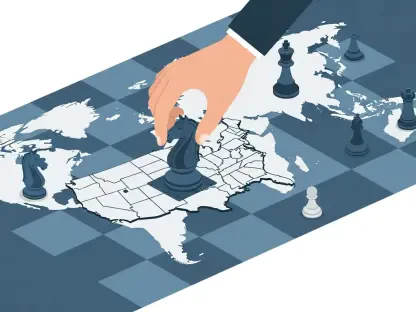In the ever-evolving landscape of insurance, Simon Glairy stands out as a leading authority in the fields of risk management and AI-driven risk assessment. With a growing conversation around disparity in life insurance coverage across different demographics, Glairy sheds light on the latest findings from the 2025 Life Insurance Index report. In this engaging dialogue, we delve into the nuances of why life insurance coverage remains uneven between genders and generations.
Can you explain why the 2025 Life Insurance Index report indicates that men are twice as likely to have life insurance coverage as women?
The report highlights a significant gender gap in insurance coverage, primarily driven by long-standing societal norms and roles. Historically, men have often been viewed as the primary breadwinners, leading them to seek out life insurance more frequently to protect their families financially. This dynamic, although changing, still influences purchasing decisions. Moreover, awareness and targeted marketing have traditionally focused more on male consumers, contributing to the disparity.
What factors contribute to women being less likely to own a life insurance policy compared to men?
Several factors come into play here. First, there’s the issue of financial literacy—where women, on average, have had less access to information and resources about financial planning, including life insurance. Secondly, women often face different life and career paths that might affect perceived need and affordability of insurance. This includes gaps in the workforce for child-rearing, which can lead to less access to employer-provided insurance.
According to the report, why do you think 15% of respondents are unsure whether they own a life insurance policy?
This uncertainty is largely tied to a lack of education and communication within the industry. Many people may have life insurance as part of their employment benefits and aren’t fully aware or haven’t kept track of their coverage details. It speaks to a general disconnect between consumers and insurers where policies are acquired but not adequately explained to policyholders.
How does life insurance coverage vary across different age groups, such as those aged 55 and over, Millennials, and Gen Z individuals?
Traditionally, older adults are more likely to own life insurance as they start considering legacy planning and estate concerns. Millennials, while financially conscious, may prioritize different financial instruments like investments over life insurance, whereas for Gen Z, life insurance may not yet be on their radar due to youth and perceived invincibility. Each group has unique motivators and barriers, influencing their insurance behaviors.
Why do you think there’s a gap between the percentage of men and women who understand their life insurance or pension payout?
The gap in understanding can be linked to the same underlying factors contributing to the disparity in coverage. Women have historically been less involved in financial decision-making within households and are less targeted by financial education campaigns. As such, they may not receive the same level of information or encouragement to delve into the details of their financial products.
What can the life insurance industry do to better educate people about the role and benefits of life insurance in estate planning and retirement?
The industry needs to actively engage with consumers through more relatable and understandable educational campaigns. Tailoring communication strategies to different demographics and using digital platforms to reach younger audiences can help. Moreover, integrating financial education into school curricula and societal dialogue can promote better understanding among young adults before they enter the workforce.
Nearly a fifth of people are unsure of what life insurance is. How can the industry improve awareness and understanding, especially among younger adults?
To bridge this knowledge gap, insurers can utilize social media and digital content for educational purposes. Interactive content like webinars, podcasts, and infographics can make the topic more accessible and relatable. Collaborating with influencers or educators who resonate with younger demographics can enhance outreach and impact.
The report mentions that life insurance can be very affordable. How can the industry communicate this affordability to potential customers?
Breaking down the cost of life insurance into practical, everyday terms can demystify it for consumers. Using tools like calculators on websites to show potential premiums based on personal data and comparative scenarios can also help. Insurers should emphasize the concrete benefits and value of coverage, framing it as an essential rather than a luxury.
Why do half of those surveyed believe they cannot afford life insurance, and how can this perception be changed?
This perception often stems from a lack of understanding of the insurance market and available options. Highlighting the array of products designed for different financial situations and educating clients on starting with basic policies that are affordable yet impactful can reshape this view. Financial literacy campaigns promoting informed choices can also mitigate misconceptions.
Among those who believe they cannot afford life insurance, there’s a notable difference between women and men. What might be the reasons behind this disparity?
The divergence is related to economic empowerment and income differences; women generally earn less and bear more family-related financial responsibilities, which affects their perception of affordability. Addressing these economic inequalities and ensuring equitable access to information and products is crucial for rectifying this imbalance.
What strategies can be employed to educate individuals who have never received education about life insurance, particularly young adults?
Partnering with educational institutions to incorporate financial literacy into curricula is a sustainable approach. Mentorship programs and workshops led by industry professionals can also be effective, offering hands-on learning experiences. Additionally, leveraging mobile and online platforms tailored to young adults’ interests can significantly increase reach and effectiveness.
How does life insurance provide peace of mind for families, and why is it considered essential in financial planning?
Life insurance offers certainty in uncertain times, providing families with financial support to cover major expenses like mortgages, education, and daily living costs. This financial safety net allows individuals to plan for the future confidently, knowing their loved ones will be protected against life’s unforeseen events.
Why do you think 14% of respondents are worried about how their family would manage financially without them, and what solutions does life insurance offer?
This concern reflects the changing economic landscapes where dual incomes are often necessary. Life insurance ensures that if one income is lost, the family doesn’t face immediate financial distress. It provides a contingency that can maintain lifestyle stability, which is comforting in planning for one’s family’s future.
Do you have any advice for our readers?
Stay informed and proactive about your financial health. Understanding the options available and how they align with personal and familial goals can empower you to make decisions that secure your financial legacy. Engage with a financial advisor to explore how life insurance fits into your broader estate and retirement plans.









